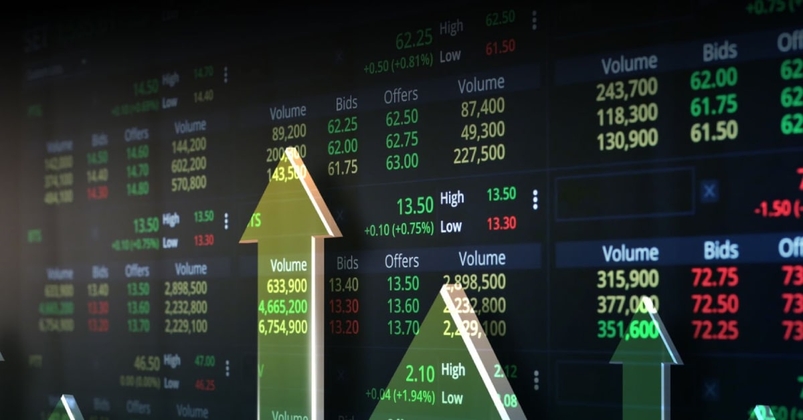Les CFD sont des instruments complexes et présentent un risque élevé de perte rapide en capital en raison de l’effet de levier. 75.1% des comptes d’investisseurs particuliers perdent de l’argent lorsqu’ils investissent sur les CFD. Vous devez vous assurer que vous comprenez le fonctionnement des CFD et que vous pouvez vous permettre de prendre le risque élevé de perdre votre argent.
- Français
- English
- Español
- Italiano
Carry Trades for Lower Interest Rates
What is Lower Interest Rate Trading?
It's a type of forex trading that involves buying and selling currency pairs based on the difference in interest rates between the two currencies. Forex traders can use lower interest rate trading to exploit the opportunities created by the divergence in monetary policies and economic conditions among different countries.
Exchange rates are determined by the supply and demand of currencies in the foreign exchange market. Interest rates are one of the main factors that influence the demand and supply of currencies.
Therefore, lower interest rate trading involves buying a currency with a lower interest rate and selling a currency with a higher interest rate, expecting that the exchange rate will move in favour of the low-yielding currency. This if successful, forex traders can earn profits from both the exchange rate movement and the interest rate differential.
Factors Affecting Exchange Rates and Interest Rates
There are many factors that affect exchange rates and interest rates in the global financial markets. Some of the most important ones are:
- Economic fundamentals: These include indicators such as GDP growth, inflation rates, unemployment rates, trade balance, etc. that reflect the economic performance and outlook of a country. Generally, stronger economic fundamentals support a higher interest rate and a stronger currency, while weaker economic fundamentals support a lower interest rate and a weaker currency.
- Central banks are the institutions that set and implement monetary policy tools such as interest rates, quantitative easing, etc. to achieve their objectives of price stability, economic growth, etc. Central banks can influence exchange rates and interest rates by changing their monetary policy stance. Generally, a more hawkish (tightening) monetary policy supports a higher interest rate and a stronger currency, while a more dovish (easing) monetary policy supports a lower interest rate and a weaker currency.
- Political stability: This refers to the degree of certainty and predictability in the political environment of a country. Political stability can affect exchange rates and interest rates by influencing the confidence and expectations of investors, consumers, businesses, etc. Generally, higher political stability supports a higher interest rate and a stronger currency, while lower political stability supports a lower interest rate and a weaker currency.
- Speculation and market sentiment refer to the expectations and emotions of market participants regarding the future direction of exchange rates and interest rates. These can affect exchange rates and interest rates by creating self-fulfilling prophecies or feedback loops that amplify or reverse market trends. Generally, positive speculation and market sentiment support a higher interest rate and a stronger currency, while negative speculation and market sentiment support a lower interest rate and a weaker currency.
- Technical analysis indicators are mathematical calculations based on historical price data that help forex traders identify trends, patterns, support and resistance levels, etc. in exchange rates and interest rates. They can help forex traders make better trading decisions by providing signals for entry and exit points, stop-loss levels, risk-reward ratios, etc. Some of the most common technical analysis indicators for lower interest rate trading are moving averages, RSI, stochastic oscillator, MACD, etc.

What Markets Typically Do Well In These Climes
Lower interest rates can have different effects on different financial instruments and sectors in the global financial markets. Some of the financial instruments and sectors that typically do well in these climes are:
- Bonds are fixed-income securities that pay periodic coupons based on interest rates. Lower interest rates increase the demand and price of bonds, while also reducing borrowing costs for bond issuers.
- Stocks represent ownership in a company and their demand and price increase with lower interest rates. Lower interest rates also benefit stock issuers by reducing the cost of capital and boosting earnings growth and valuation.
- Commodities are raw materials traded on commodity exchanges. It also weakens the value of the US dollar, making commodities cheaper for foreign buyers.
- Emerging markets are regions with less developed economies and financial markets. Lower interest rates increase demand and price of assets in these markets, attracting foreign investors. This can improve economic growth and stability for emerging market countries.
Strategies for Lower Interest Rate Trading
Carry trades are a popular strategy in the world of foreign exchange (Forex) trading and finance. They involve borrowing money in a currency with a low-interest rate and investing it in a currency with a higher interest rate. The goal is to profit from the interest rate differential, known as the "carry," which can result in positive returns.
Here's a step-by-step explanation of how carry trades work:
Currency Selection: Traders select two currencies for the trade. The currency they borrow (the "funding currency") typically has a lower interest rate, while the currency they invest in (the "target currency") has a higher interest rate. The idea is to profit from the interest rate differential between these two currencies.
Borrowing Funds: Traders borrow money in the funding currency. They do this by either taking out a loan or utilising a margin account offered by their broker. This borrowed money is often referred to as the "carry trade position" or "carry trade funding."
Investing in the Target Currency: The borrowed funds are then converted into the target currency and invested in assets that provide a return, such as government bonds or other interest-bearing securities denominated in the target currency.
Earning the Carry: As time passes, the trader earns interest on the invested funds in the target currency. This interest, often referred to as the "positive carry," is the difference between the interest rate earned on the target currency investments and the interest rate paid on the borrowed funds in the funding currency.
Exchange Rate Risk: While earning the positive carry, traders are also exposed to exchange rate fluctuations. The value of the target currency may appreciate or depreciate relative to the funding currency. If the target currency appreciates, it can magnify profits, but if it depreciates, it can lead to losses.
Carry trades require constant monitoring of interest rate differentials, economic conditions, and geopolitical events that can affect currency exchange rates. Traders must also be prepared to manage their positions and potentially close them out if market conditions change unfavourably.
Key Points to Consider:
- Carry trades involve both interest rate risk and exchange rate risk. If the target currency depreciates significantly, it can offset the interest rate gains or even lead to losses.
- Carry trades can be sensitive to market volatility. Unexpected events or changes in central bank policies can impact interest rates and exchange rates, leading to abrupt market movements.
- Traders often use leverage to magnify the returns on carry trades, but this also increases the potential for losses.
